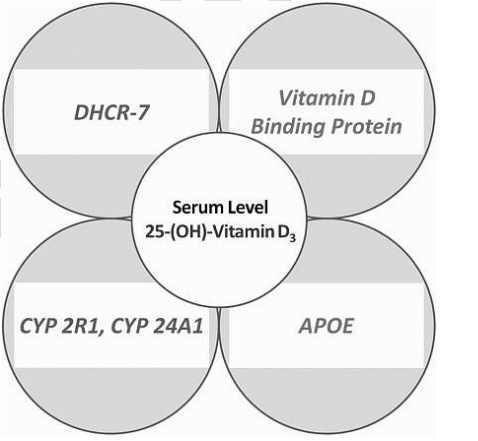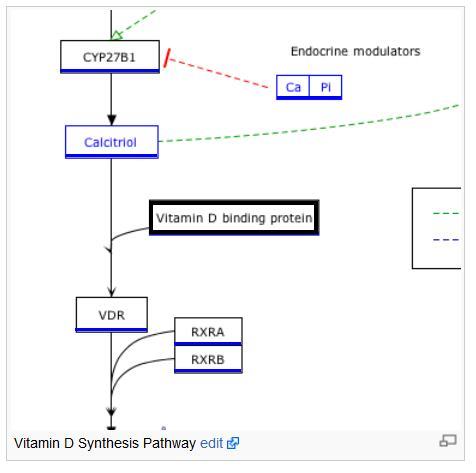Mice lacking CYP2R1 enzyme activate about half of much vitamin D
CYP2R1 is a major, but not exclusive, contributor to 25-hydroxyvitamin D production in vivo
PNAS September 9, 2013, [doi: 10.1073/pnas.1315006110](https://doi.org/10.1073/pnas.1315006110) $10 for full access
Jinge G. Zhu a,
Justin T. Ochalek a,
Martin Kaufmann b,
Glenville Jones b, and
Hector F. DeLuca a deluca@biochem.wisc.edu
A Department of Biochemistry, University of Wisconsin, Madison, WI 53706; and
B Department of Biomedical and Molecular Sciences, Queen’s University, Kingston, ON, Canada K7L 3N6
Significance: Although the vitamin D endocrine system has been well defined and the enzyme responsible for converting 25-hydroxyvitamin D to the final hormone, 1α,25-dihydroxyvitamin D3, is well understood, the enzyme responsible for the conversion of vitamin D to the blood form, 25-hydroxyvitamin D, has not been clearly identified. A case has been made for vitamin D 25-hydroxylase CYP2R1 as the responsible enzyme, but proof is lacking. We have produced a null mutant mouse lacking CYP2R1. With this model, we have shown that CYP2R1 is the major but not exclusive 25-hydroxylase and that there remains another significant enzyme responsible for this step in vitamin D activation that has yet to be identified.
Abstract: Bioactivation of vitamin D consists of two sequential hydroxylation steps to produce 1α,25-dihydroxyvitamin D3.
It is clear that the second or 1α-hydroxylation step is carried out by a single enzyme, 25-hydroxyvitamin D 1α-hydroxylase CYP27B1 .
However, it is not certain what enzyme or enzymes are responsible for the initial 25-hydroxylation. An excellent case has been made for vitamin D 25-hydroxylase CYP2R1, but this hypothesis has not yet been tested. We have now produced Cyp2r1−/− mice. These mice had greater than 50% reduction in serum 25-hydroxyvitamin D3. Curiously, the 1α,25-dihydroxyvitamin D3 level in the serum remained unchanged. These mice presented no health issues. A double knockout of Cyp2r1 and Cyp27a1 maintained a similar circulating level of 25-hydroxyvitamin D3 and 1α,25-dihydroxyvitamin D3.
Our results support the idea that the CYP2R1 is the major enzyme responsible for 25-hydroxylation of vitamin D, but clearly a second, as-yet unknown, enzyme is another contributor to this important step in vitamin D activation.
See also VitaminDWiki
Activation (methylation) of CYP2R1 and CYP24A1 predict response to dose of vitamin D – Oct 2013
GC, CYP2R1 and DHCR7 genes associated with low vitamin D levels in China – 2012, 2013
GC genotypes associated with lower vitamin D levels – April 2012
Response to vitamin D related to DBP and CYP2RI genes – Aug 2013
40 percent less likely to get adequate vitamin D response if have certain genes – Jan 2013
Pharmacology of vitamin D - April 2011 which has the following graphic

See also web
- Vitamin D-binding protein WikiPedia, which had the following image May 2013

